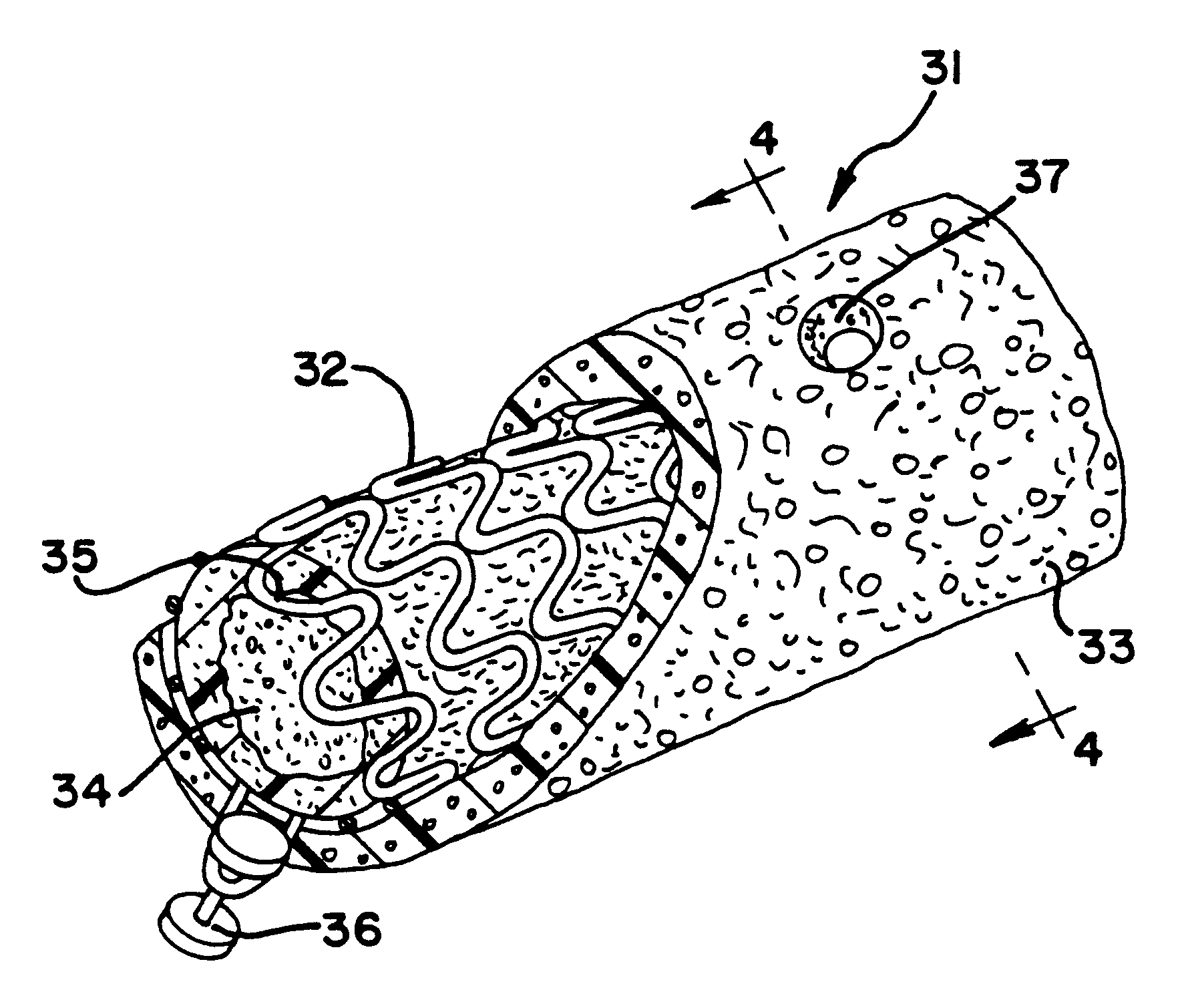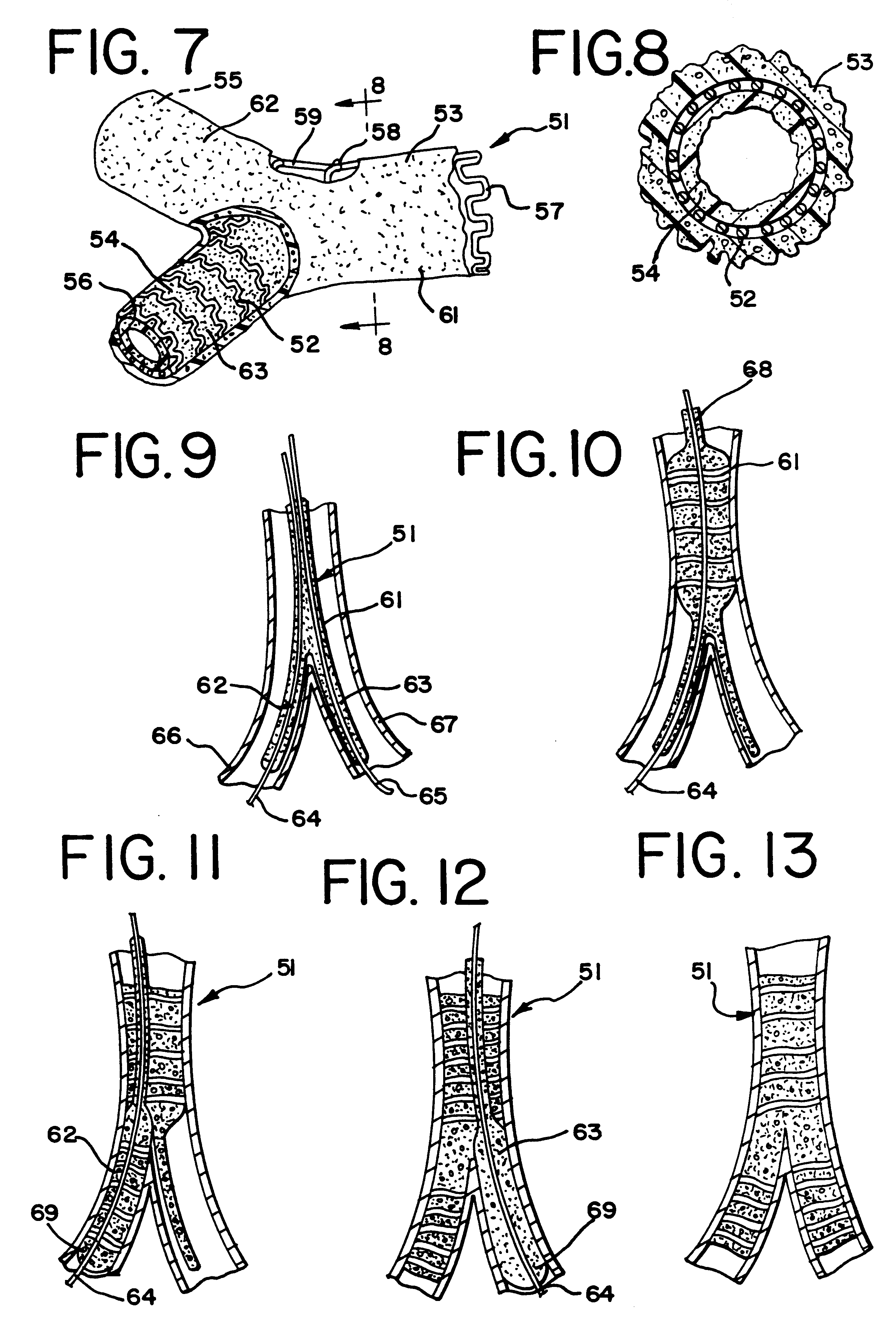Expandable supportive endoluminal grafts
a supportive, expandable technology, applied in the field of expandable supportive endoluminal grafts, can solve the problems of compromising the degree of patency of the primary vessel and/or its branches or bifurcations, undisciplined cell development, and rapid development of cellular hyperplasia, so as to facilitate normal cellular growth or invasion
- Summary
- Abstract
- Description
- Claims
- Application Information
AI Technical Summary
Benefits of technology
Problems solved by technology
Method used
Image
Examples
example i
A vascular expandable supportive endoluminal graft was made using a 16 mm diameter, 12 cm long Wallstent.RTM. device as the support component in the following manner. A grounded 16 mm mandrel was rotated on a spinning machine at 500 RPM, and a spinnerette with 30 orifices was reciprocated along the axis of the mandrel at 13.8 inches / second while applying 40,000 volts to the spinnerette. Polycarbonate urethane, in dimethyl acetamide solution (45% solids) was extruded from the spinnerette at 0.123 ml / min, the fibers coming onto the mandrel in random fashion to form a mat-like structure having randomly shaped pores. The environment in the spinning chamber was controlled such that sufficient solvent from the urethane solution evaporated off during spinning to enable the fibers to bond to underlying fibers during each transverse of the spinnerette. After 300 passes of the spinnerette, the spinning procedure was stopped and the mandrel with the spun polycarbonate urethane mat was removed ...
example ii
A bifurcated aortic expandable supportive endoluminal graft is made in the following manner: An aortic trunk supportive endoluminal graft is fabricated using a 16 mm diameter, 12 cm long support component. First, a 16 mm mandrel is rotated on a spinning machine at 500 rpm, and a spinnerette with 30 orifices reciprocated along the axis of the mandrel at 13.8 inches / second. Polycarbonate urethane, in dimethyl acetamide solution (45% solids) is extruded from the spinnerette at 0.123 ml / min and wound onto the rotating mandrel such that the fibers form a 50.degree. pitch angle in relation to the axis of the mandrel. The environment in the spinning chamber is controlled such that sufficient solvent from the urethane solution evaporates off during spinning to enable the fibers to bond to underlying fibers during each transverse of the spinnerette. The thus formed spun polycarbonate urethane mesh has a length of about 16 cm, is removed from the machine and is cured at 110.degree. C. for 16 ...
PUM
 Login to View More
Login to View More Abstract
Description
Claims
Application Information
 Login to View More
Login to View More - R&D
- Intellectual Property
- Life Sciences
- Materials
- Tech Scout
- Unparalleled Data Quality
- Higher Quality Content
- 60% Fewer Hallucinations
Browse by: Latest US Patents, China's latest patents, Technical Efficacy Thesaurus, Application Domain, Technology Topic, Popular Technical Reports.
© 2025 PatSnap. All rights reserved.Legal|Privacy policy|Modern Slavery Act Transparency Statement|Sitemap|About US| Contact US: help@patsnap.com



